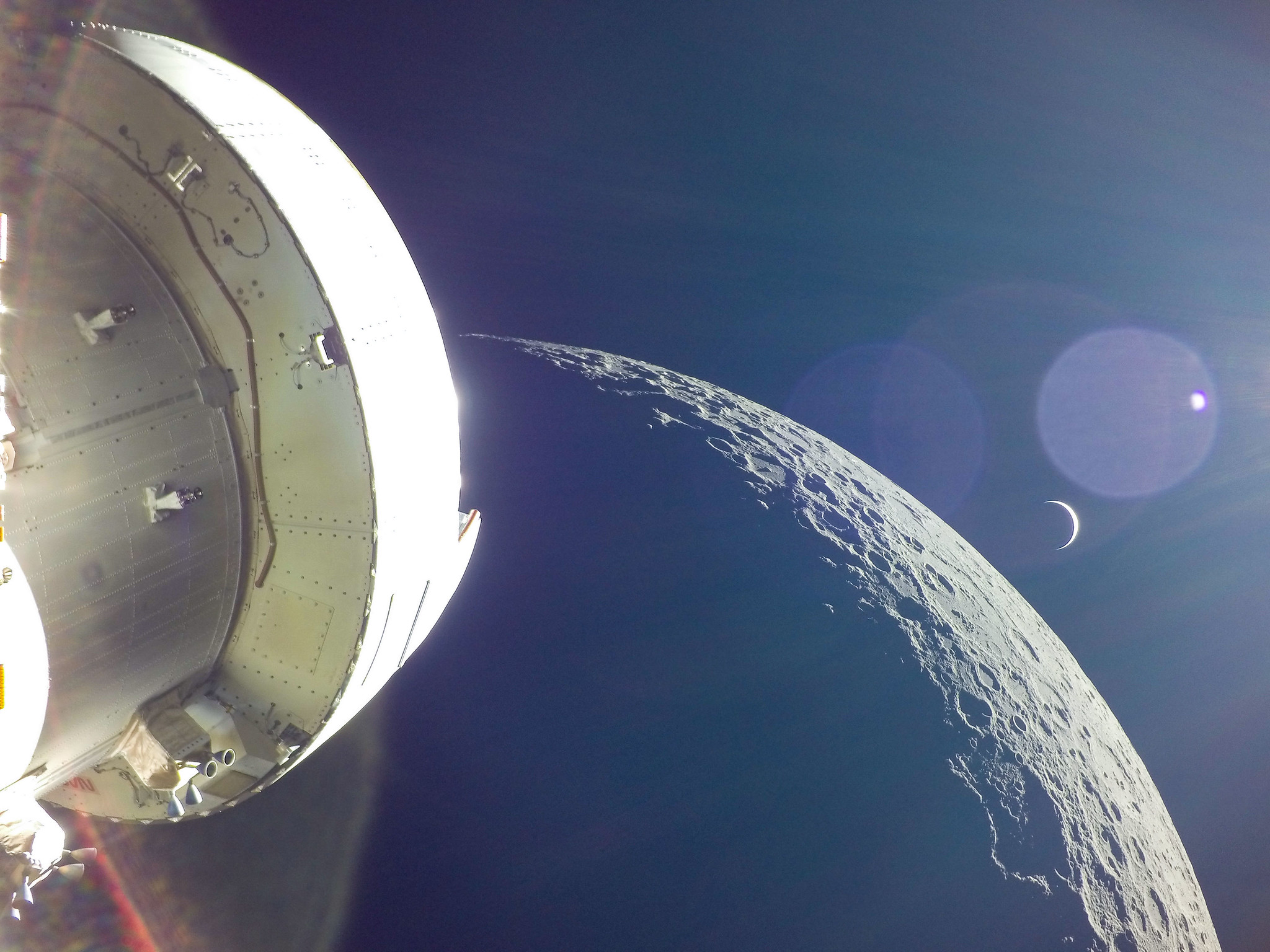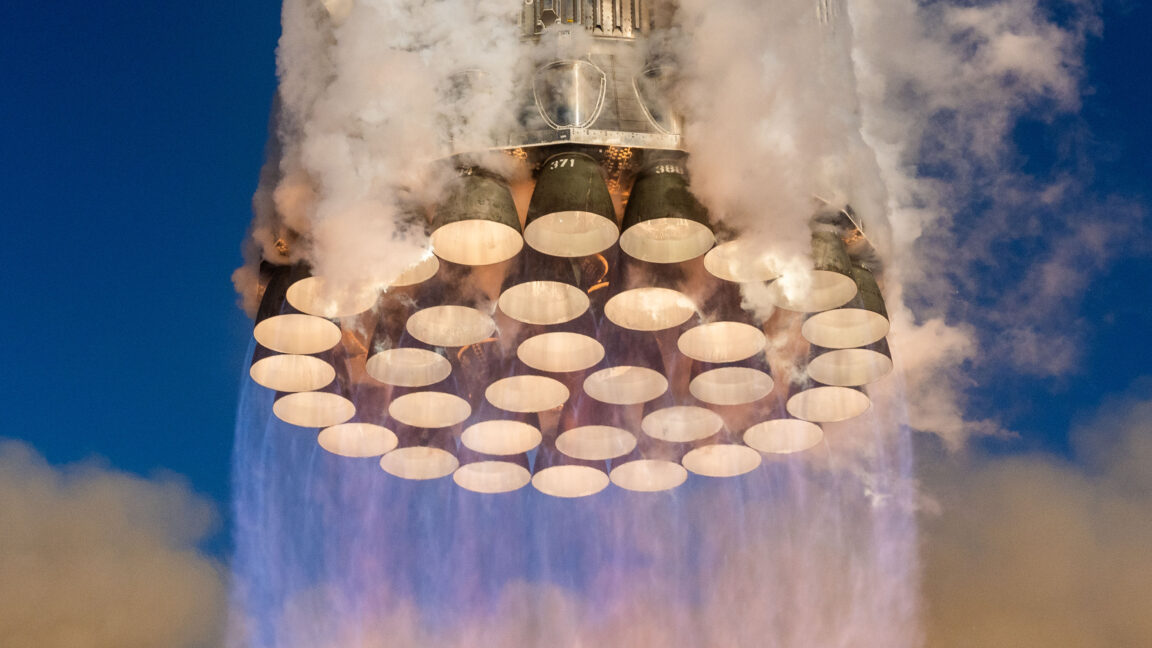A new report from the Government Accountability Office suggests NASA's Artemis III mission, which aims to return humans to the Moon's surface for the first time in more than 50 years, could be delayed from late 2025 until 2027.
The readiness of SpaceX's human-rated lander and new commercial spacesuits developed by Axiom Space are driving the schedule for Artemis III. Both contractors have a lot of work to do before the Artemis III landing, and the government watchdog's report said delays with SpaceX's Starship program and design challenges with Axiom's spacesuits threaten NASA's schedule.
"NASA and its contractors have made progress, including completing several important milestones, but they still face multiple challenges with development of the human landing system and the space suits," the GAO said in a report published Thursday. "As a result, GAO found that the Artemis III crewed lunar landing is unlikely to occur in 2025."
NASA officials have previously said it would be challenging to meet the target launch date for Artemis III in December 2025. In June, Jim Free, who oversees NASA's Artemis program, said problems with SpaceX's Starship rocket—necessary for the Artemis III moon lander—would probably force the Artemis III mission into 2026.
In August, Free suggested NASA "may end up flying a different mission" if the hardware required for the Moon landing wasn't ready. The critical new hardware needed to enable a Moon landing with astronauts are the Starship-derived lander, new spacesuits for surface exploration, and a docking system for the Orion spacecraft, which will ferry astronauts from Earth to lunar orbit and then back home.
“If we have these big slips out, we’ve looked at if can we do other missions," Free said. He pointed to lessons learned during the International Space Station program. Several times, NASA and its international partners resequenced the assembly of the space station, based on the readiness of new modules and other elements, and the availability of the Space Shuttle, which was grounded more than two years after the Columbia accident and then retired in 2011.
“A large volume of remaining work”
In its report last week, the GAO said that, if history is any guide, the Artemis III mission is unlikely to launch before 2027. It's no surprise that the Human Landing System and new lunar spacesuits are the two biggest risks to the schedule. Both pieces of the architecture are required for a crew lunar landing, but not for the Artemis II mission, a flight officially slated for late 2024 but more likely to happen in 2025, which will send four astronauts on a trip around the far side of the Moon in an Orion spacecraft.
For the Artemis III landing mission and subsequent expeditions to the lunar surface, astronauts will depart Earth on NASA's Space Launch System rocket and fly on Orion to the vicinity of the Moon, where they will link up with commercial landing craft supplied by SpaceX or Blue Origin. SpaceX has the contract for the first two landers.
"The Human Landing System is aiming to complete its development—from project start to launch—in 79 months, which is 13 months shorter than the average for NASA major projects," the GAO wrote in its report. It's unrealistic, the GAO said, to expect the HLS program to complete development more than a year faster than that average.
"GAO found that if development took as long as the average for NASA major projects, the Artemis III mission would likely occur in early 2027," the government watchdog concluded.
The GAO completed its report before SpaceX launched its second full-scale test flight of its Super Heavy booster and Starship rocket. That launch on November 18 demonstrated significant progress on the Starship program, with the rocket nearly reaching orbital velocity before terminating over the Gulf of Mexico. A key takeaway from the test flight was the successful performance of all 39 Raptor engines on the rocket, an improvement over the first Starship test flight in April.
As of September, two months before the second Starship test flight, the HLS program had delayed eight of 13 "key events" by at least six months, and two of those had slipped to 2025, the same year that NASA and SpaceX aim to have a fully human-rated Starship ready to land astronauts on the Moon.
The GAO outlined a "large volume of remaining work" for SpaceX's human-rated lander, a vehicle that will stand more than 15 stories tall. Chief among these milestones is proving the transfer and long-term storage of cryogenic methane and liquid oxygen in orbit. SpaceX plans to launch a series of tankers, each based on the same basic Starship architecture as the Human Landing System, to fill up a propellant depot in Earth orbit. Then, the Starship landing craft will dock with the depot to receive the propellant it needs to travel to the Moon and transport astronauts to and from the lunar south pole.
"NASA documentation states that SpaceX has made limited progress maturing the technologies needed to support this aspect of its plan," the GAO wrote.
But it's not just the lander. The GAO also said "significant work remains to resolve design challenges" with new commercial spacesuits designed to give astronauts mobility while walking on the Moon's surface. NASA's current spacesuits used for spacewalks at the International Space Station are decades old and don't have the flexibility required for walking in a partial gravity environment.
Axiom, a Houston-based company that is also developing a commercial space station in Earth orbit, won the NASA contract to supply spacesuits for the Artemis III mission. The GAO said Axiom is "leveraging" some of the work NASA accomplished on modernized spacesuits before turning over responsibility to the commercial industry.
However, there are issues with some of NASA's work.
"For example, NASA’s original design did not provide the minimum amount of emergency life support needed for the Artemis III mission," the GAO wrote. "As a result, Axiom representatives said they may redesign certain aspects of the spacesuit, which could delay its delivery for the mission."


